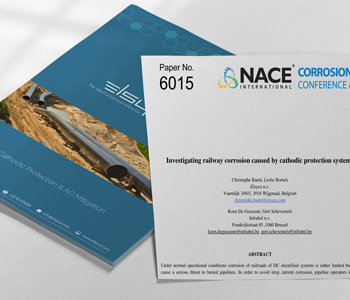
Investigating railway corrosion
(NACE 2015)
Under normal operational conditions corrosion of railroads of DC electrified systems is rather limited but can cause a serious threat to buried pipelines. In order to avoid stray current corrosion, pipeline operators install drainage systems and in some cases a CP impressed current system is directly connected to the railway infrastructure resulting in an increased corrosion attack of the rails, especially at the rail crossings.

Investigating railway corrosion (NACE 2015)
Christophe Baeté, Leslie Bortels, Elsyca n.v.; Koen De Gussemé, Gert Schevernels, Infrabel n.v.
Abstract
Under normal operational conditions corrosion of railroads of DC electrified systems is rather limited but can cause a serious threat to buried pipelines. In order to avoid stray current corrosion, pipeline operators install drainage systems and in some cases a CP impressed current system is directly connected to the railway infrastructure resulting in an increased corrosion attack of the rails, especially at the rail crossings.
The Belgian railway operator has started a campaign to investigate different alternatives to reduce the corrosion risk of its railway network in a region containing 320 km of rail tracks and 620 km of pipelines. A first step in the process was to build a computational model to calculate the current exchange between the rail and the pipeline network. The instantaneous corrosion rate of the rails and the potential variations of the pipelines were simulated for the complete region, given the position of the trains for every second during 24 hours.
The model allowed performing a sensitivity analysis, identifying the high risk zones and elaborating mitigative solutions such that the integrity of both railway and pipeline network is maintained.
